Author: Will Lovell
Rich in both tradition and controversy among American brewers, corn is a New World ingredient with evidence of use in the production of alcoholic beverages that stretches back to pre-Incan times. As thirsty Europeans who’d arrived to the shores of the Americas began brewing the beers of their homeland, they often relied on corn to supplement more difficult to come by barley malt. These days, corn is perhaps most notably used in mass-produced yellow lager, which likely explains the less-than-positive views some hold on this historic grain.
While flake corn, also referred to as maize, is the form that’s likely most familiar to modern brewers, it can also be malted in a similar fashion as barley, giving it the quality of being able to self-convert. For robust styles, corn is typically used to increase alcohol content while contributing minimal aroma, flavor, or body, and even for more delicate beers, the overall perceptible impact of corn is often noted as being rather subtle.
I’ve brewed many batches of beer using flaked maize, and in my experience, it’s done pretty much what I expected it to. I recently picked up a sack of TexMalt Texas Blue Corn Malt, which they say “gives notes of sweet tortilla dough and homemade grits.” With a few past xBmts producing conflicting results on the perceptual impact flaked maize has on beer, I designed an xBmt to see how this unique malted corn product impacts a simple pale lager.
| PURPOSE |
To evaluate the differences between an International Pale Lager made with 18% malted blue corn and one made with all barley malt.
| METHODS |
With a THC pale lager brew on deck, I decided to brew another batch simultaneously and swapped out 18% of the Llano Pilsner Malt for TexMalt Texas Blue Corn Malt.
In The Blue
Recipe Details
| Batch Size | Boil Time | IBU | SRM | Est. OG | Est. FG | ABV |
|---|---|---|---|---|---|---|
| 5.5 gal | 60 min | 18.6 | 3.4 SRM | 1.047 | 1.011 | 4.73 % |
| Actuals | 1.047 | 1.011 | 4.73 % | |||
Fermentables
| Name | Amount | % |
|---|---|---|
| Llano Pilsner | 9 lbs | 81.82 |
| Texas Blue Corn Malt | 2 lbs | 18.18 |
Hops
| Name | Amount | Time | Use | Form | Alpha % |
|---|---|---|---|---|---|
| Hersbrucker | 28 g | 60 min | Boil | Pellet | 4.3 |
| Hersbrucker | 10 g | 30 min | Boil | Pellet | 4.3 |
| Hersbrucker | 10 g | 5 min | Boil | Pellet | 4.3 |
Yeast
| Name | Lab | Attenuation | Temperature |
|---|---|---|---|
| Global (L13) | Imperial Yeast | 77% | 46°F - 55.9°F |
Notes
| Water Profile Ca 60 | Mg 0| Na 0 | SO4 77 | Cl 50 |
Download
| Download this recipe's BeerXML file |
The night prior to brewing, I collected two identical volumes of RO water in my Delta Brewing AIO systems then adjusted them to the same desired profile before measuring out and milling the grains.
The malted blue corn required some special considerations when milling as it is much harder and larger than barley malt. For this, I found an old food processor did the trick.
After waking up to properly heated water the next morning, I incorporated the grains for the all-barley batch then did the same for the blue corn malt batch 45 minutes later, checking both to ensure they were at the same mash temperature.
While the mashes were resting, I prepared the kettle hop additions.
Once the 60 minute mashes were complete, I removed the grains and proceeded to boil each wort for 60 minutes, adding hops at the times stated in the recipe.
When the boils were complete, I quickly chilled the worts then transferred them to sanitized Kegmenters before taking refractometer readings showing a slight difference in OG.
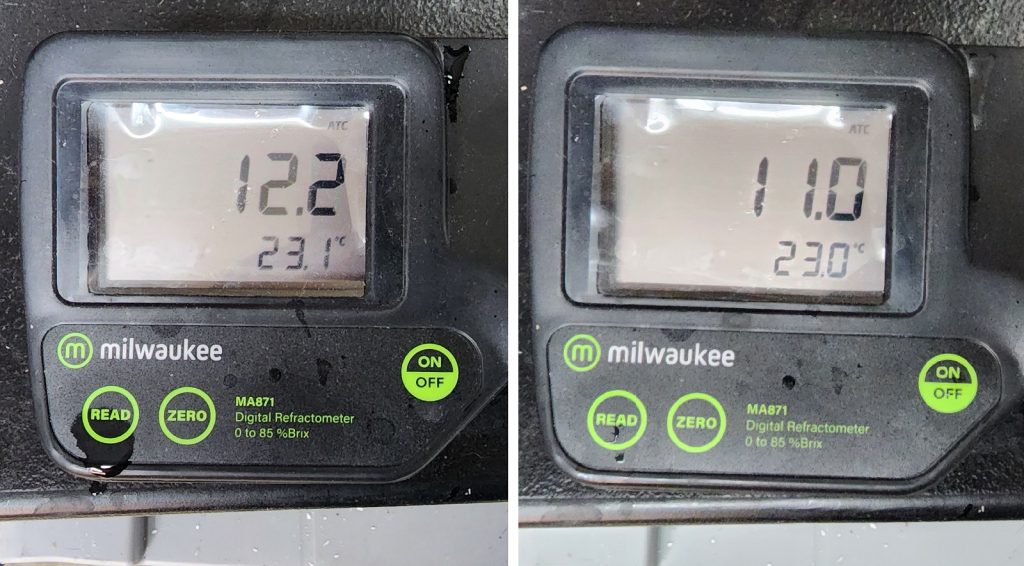
After transferring the wort to a sanitized fermented, I direct pitched a single pouch of Imperial Yeast L13 Global.
The beer was left to ferment at 64°F/18°C for a week before I took hydrometer measurements showing the beer made with malted blue corn was 0.001 FG higher than the all-barley malt batch.
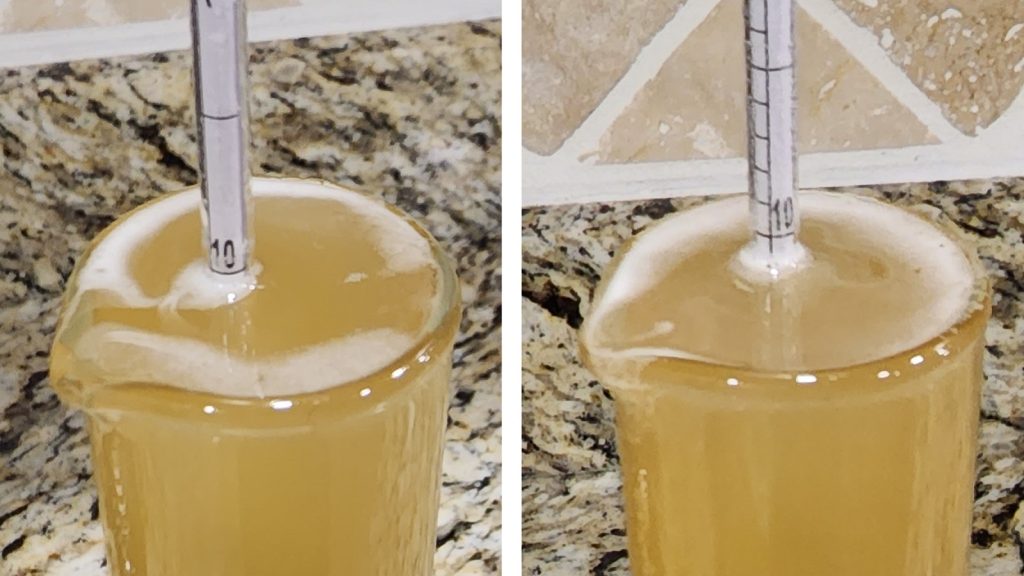
At this point, I pressure-transferred the beers to CO2 purged kegs and placed them in my keezer where they were burst carbonated overnight before I reduced the gas to serving pressure. After a week of conditioning, the beers were ready to serve to tasters.
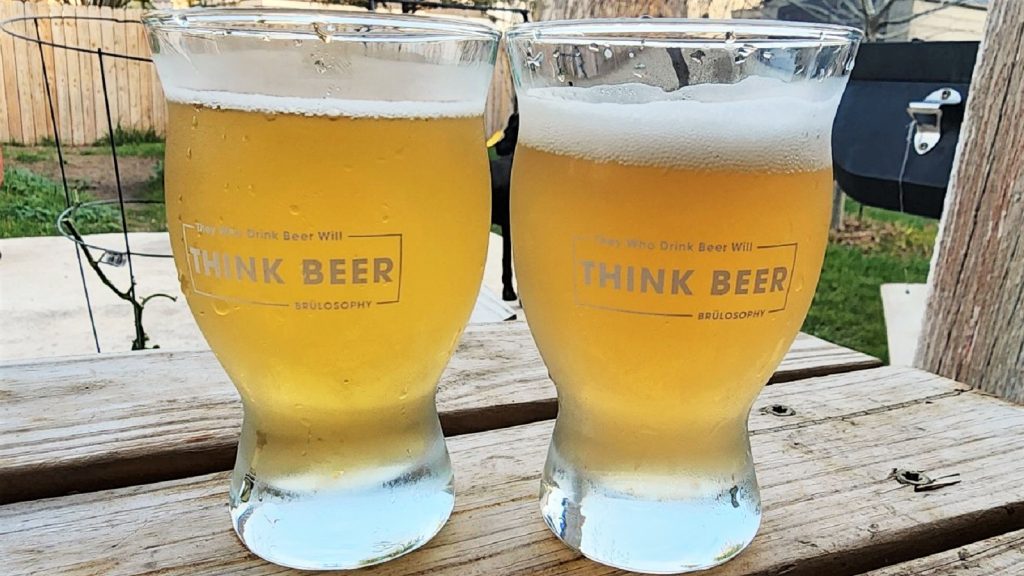
| RESULTS |
A total of 24 people of varying levels of experience participated in this xBmt. Each participant was served 1 sample of the beer made with all barley malt and 2 samples of the beer made with 18% malted blue corn in different colored opaque cups then asked to identify the unique sample. While 13 tasters (p<0.05) would have had to accurately identify the unique sample in order to reach statistical significance, only 9 did (p=0.41), indicating participants in this xBmt were unable to reliably distinguish an International Pale Lager made with 100% Pilsner malt from one made with 18% blue corn malt.
My Impressions: Out of my 5 semi-blind triangle test attempts, I correctly identified the odd-beer-out just 2 times, which were admittedly just guesses, as I perceived these beers as being perceptibly identical in every way.
| DISCUSSION |
From the Chicha of pre-Incan times to the mass-market fizzy yellow lagers of today, corn has been a staple brewing ingredient for as long as beer has been around. Typically used to increase strength while having minimal impact on other perceptible characteristics, some swear that the use of corn imparts undesirable aromas and flavors to beer. Countering this claim, tasters in this xBmt were unable to reliably distinguish an International Pale Lager made with all barley malt from one where 18% of the barley was replaced by malted blue corn.
When looking at the history of American brewing, corn was originally relied on as a less expensive supplement to barley due to how much easier it was to acquire, not necessarily because of its perceptible characteristics. Considering these results with those from past xBmts on the same topic, it would seem this usage approach is valid. Objectively, the beer made with a dose of malted blue corn not only had a lower OG, but a higher FG, resulting in it possessing 0.4% less alcohol than the all barley version.
Up until this xBmt, I’d only ever used whatever flaked maize I could find in my local shop, and I can’t say I ever notice it as contributing a notably corn-like flavor. The same goes for these beers, which suggests to me blue corn malt is a viable substitute for flaked maize. As someone who truly values supporting local businesses, I definitely look forward to using their Texas Blue Corn Malt more in the future!
If you have any thoughts about this xBmt, please do not hesitate to share in the comments section below!
Support Brülosophy In Style!
All designs are available in various colors and sizes on Amazon!
Follow Brülosophy on:
FACEBOOK | TWITTER | INSTAGRAM
If you enjoy this stuff and feel compelled to support Brulosophy.com, please check out the Support page for details on how you can very easily do so. Thanks!



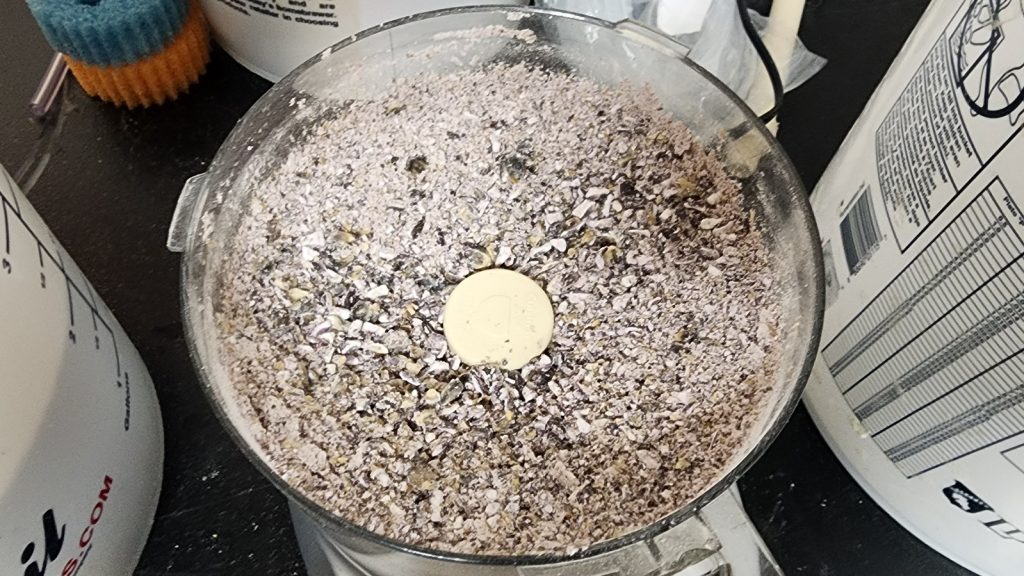
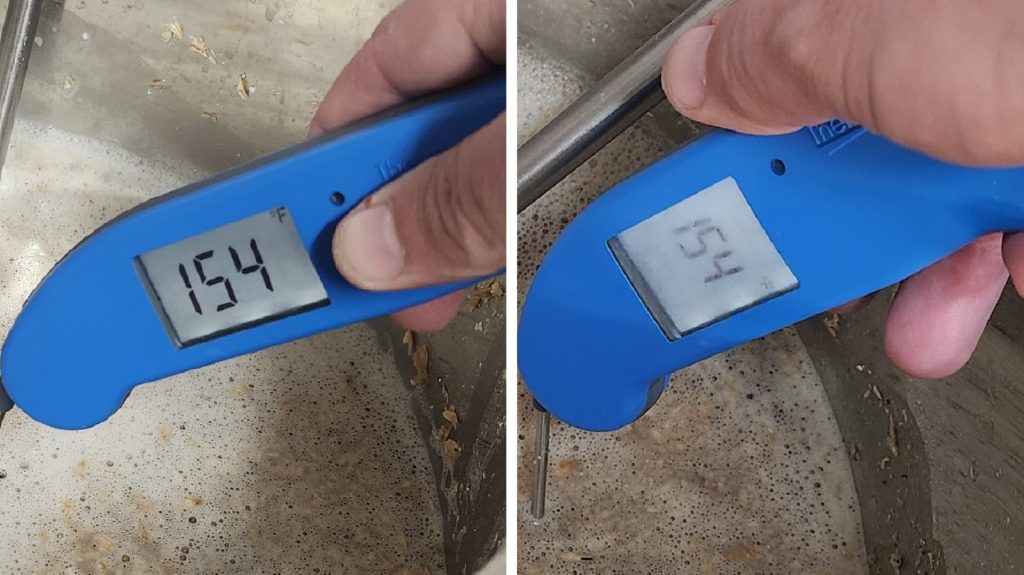
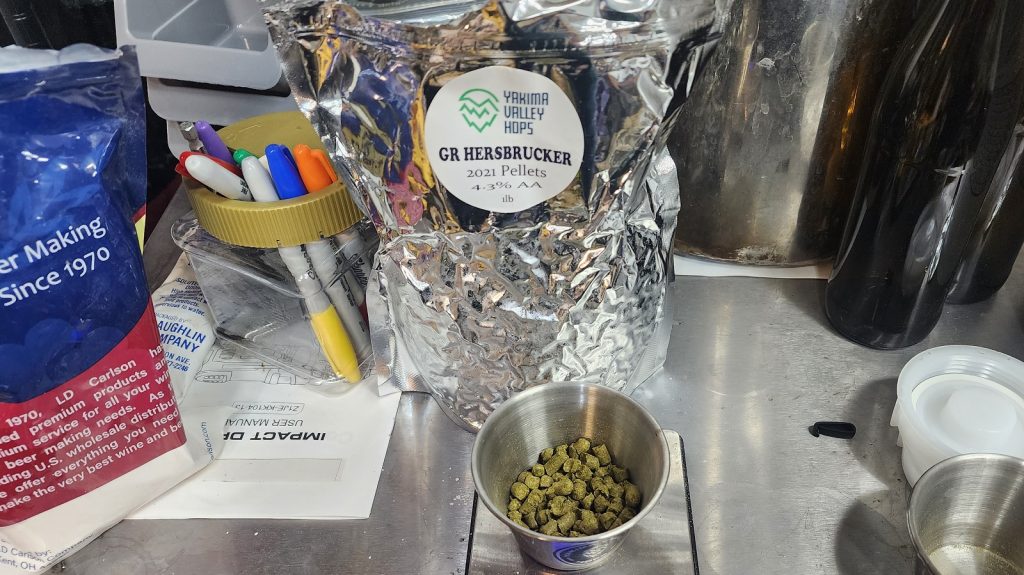

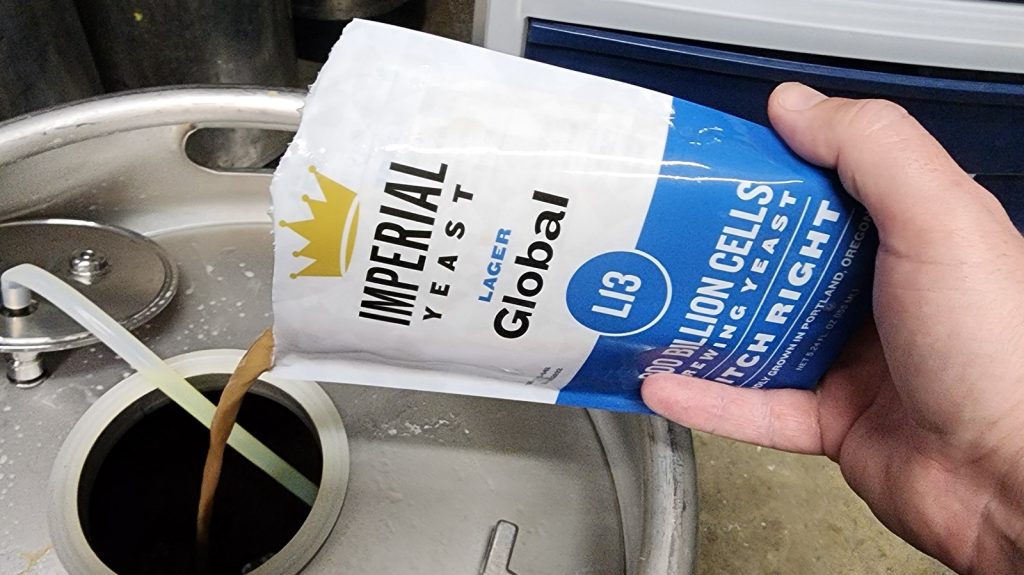











5 thoughts on “exBEERiment | Impact Malted Blue Corn Has On An International Pale Lager”
I’d be interested to see a comparison between flaked maize and malted corn. In my experience, malted corn tastes closer to malt than corn. I get little of the sweet corn flavor I get from flaked corn, and more of the toast-like flavors similar to something like Vienna malt (although I’m sure that varies from malt to malt depending on the kilning time and temp). Thanks for the xBmt!
The purpose and design of this experiment don’t seem to align with the introduction. The experiment compares malted blue corn to no corn. Interesting but not what I was expecting based on the set up. What I was expecting was flaked unmalted corn vs malted corn. Not sure what “blue” has to do with the larger picture. Still informative tho. Cheers.
11 brix is 1.044 so you actually have a .005 original gravity difference and a 0.8% difference in alcohol.
Great experiment. I love that all of you take the time to do these.
Well written as it is, using a common misunderstanding the history of the ingredients used to make beer. Mistaking popular history for actual history.* At the time the recipes for those beers were created, the majority of barley grown in the US, was meant for animal feed. It fact it wasn’t until 1924 when the Isaria strain of barley was approved as the first barley meant specifically for beer brewing. In the 1800’s rice and corn were a far superior grain and were a premium ingredient.
*Another great example is the belief that witches are based on female brewers and were the church’s way of discrediting them. When the iconography of the witch predates that of the church’s power move by hundreds of years.
I can’t get beyond the fact that someone spent hours taping/plastering all the seems of this space and yet didn’t spend the time to paint it, which is the reason for plastering the seams in the first place, and then someone mounted things to the wall without painting it first.